Figures & data
Table 1 Demographic, biochemical, virological, and tumor characteristics of the study patients
Figure 1 Graphs show cumulative DFS and recurrence rates in patients with HCC after PATACE.
Notes: (A) Patients with higher APRI had better 3-year DFS benefits than those with low APRI score (P=0.013); (B) patients with higher APRI had better 5-year DFS benefits than those with low APRI score (P<0.01); (C) patients with higher APRI had lower OS than those with low APRI score (P=0.0035).
Abbreviations: APRI, aspartate aminotransferase-to-platelet ratio index; DFS, disease-free survival; HCC, hepatocellular carcinoma; OS, overall survival; PATACE, postoperative adjuvant transarterial chemoembolization.

Table 2 Factors associated with poor DFS after surgical resection for HCC according to univariate and multivariate analyses
Table 3 Factors associated with TTR after surgical resection for HCC according to univariate and multivariate analysis
Table 4 Subgroup analysis for the effect of APRI on DFS and TTR of HCC
Figure 2 Nomogram shows assessment of 3- and 5-year DFS of patients with HCC who underwent PATACE.
Notes: (A) Nomogram shows assessment of 5-year DFS of patients with HCC who underwent PATACE. (B) Nomogram shows assessment of 3-year DFS of patients with HCC who underwent PATACE.
Abbreviations: ALT, alanine aminotransferase level; APRI, aspartate aminotransferase-to-platelet ratio index; BCLC, Barcelona Clinic Liver Cancer grade; DFS, disease-free survival; HCC, hepatocellular carcinoma; PLT count, platelet count; PATACE, postoperative adjuvant transarterial chemoembolization.
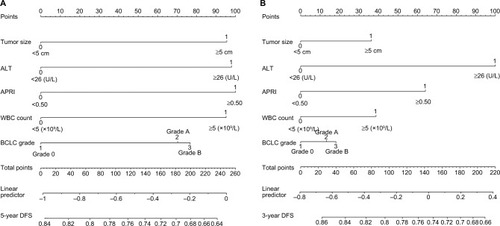
Figure 3 Calibration plot of the nomogram.
Notes: (A) Calibration curves of the nomogram at 5-year DFS. (B) Calibration curves of the nomogram at 3-year DFS. Calibration curves of the nomogram at 3 years (right) and 5 years (left) were close to 45° line, which shows good correlation between assessed and observed DFS.
Abbreviation: DFS, disease-free survival.
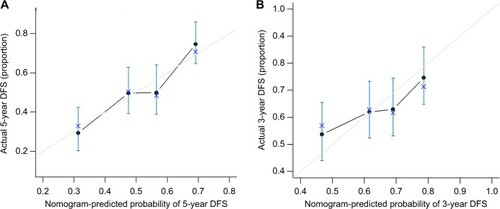
Figure S1 Patient flow diagram.
Abbreviations: HCC, hepatocellular carcinoma; TACE, transarterial chemoembolization.
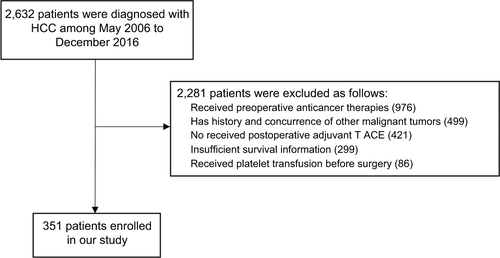
Figure S2 X-tile plots of the optimal cutoff point for the APRI.
Notes: Coloration of the plot represents the strength of the association at each division, ranging from low (dark, black) to high (bright, red or green). Green indicates a direct association between score and survival, whereas black indicates an inverse association.
Abbreviation: APRI, aspartate aminotransferase-to-platelet ratio index.
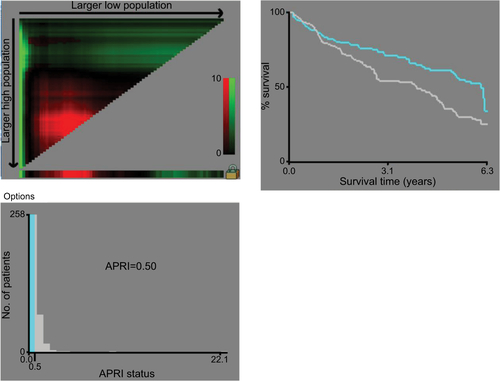
Figure S3 Nomogram shows assessment of time to recurrence of patients with HCC who underwent PATACE.
Abbreviations: HCC, hepatocellular carcinoma; APRI, aspartate aminotransferase-to-platelet ratio index; ALT, alanine aminotransferase; PLT count, platelet count; PATACE, postoperative adjuvant transarterial chemoembolization.
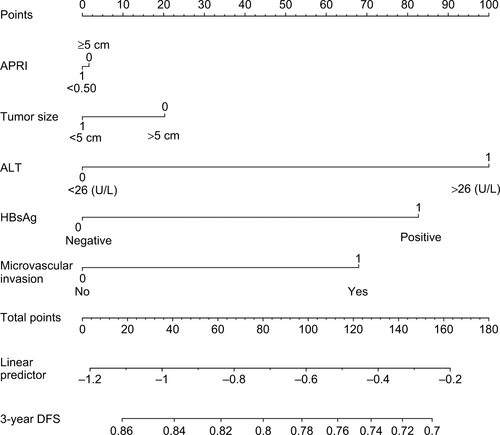
Figure S4 Calibration plot of the nomogram.
Notes: Calibration curves of the nomogram at time to recurrence shows good correlation between assessed and observed outcomes. Calibration curves were close to 45° line.
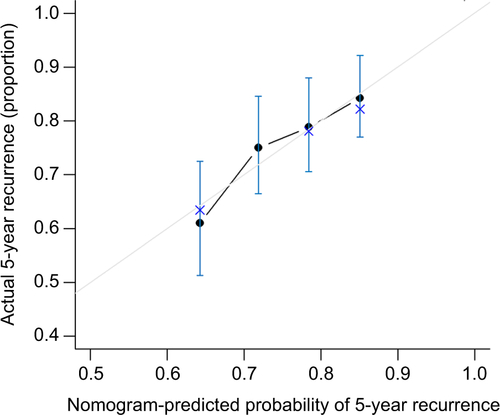
Table S1 Assessment accuracy of serum markers for overall DFS and recurrence for hepatocellular carcinoma after curative resection
